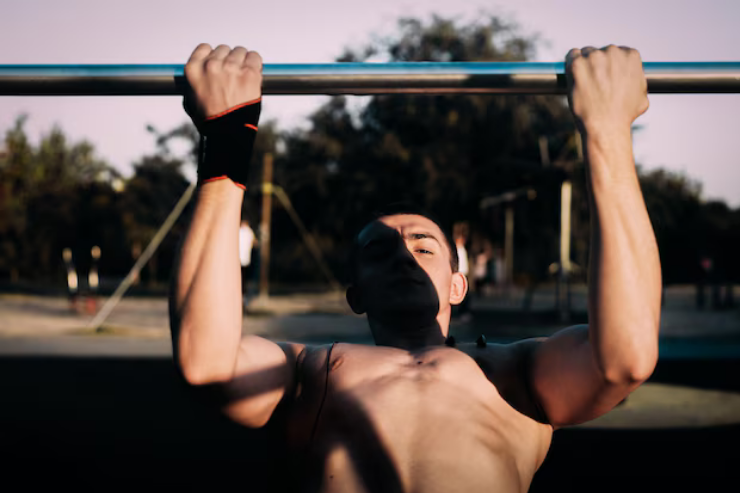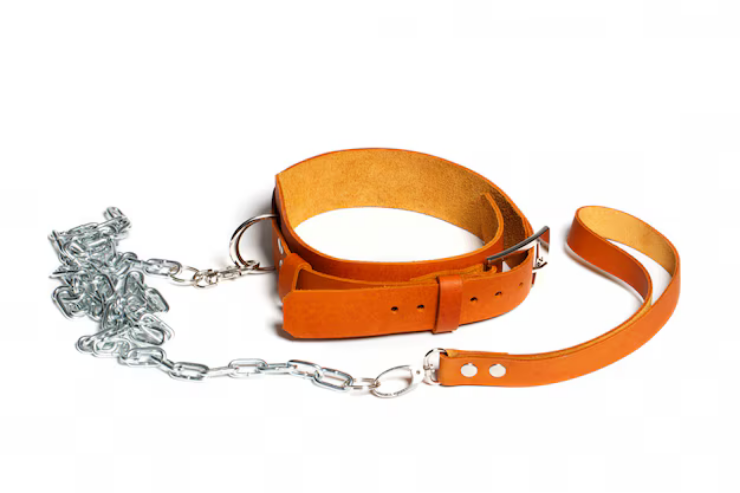
Why Chin-Ups Are the Best Bodyweight Biceps Exercise?
Chin-Ups are the best bodyweight biceps exercise. Yes, but only if you know the right technique to engage the biceps muscles.
In the world of weight training and bodybuilding, the biceps are the single most trained muscle, more than the calves and legs.
Why? It’s a common trait among people to train muscles that are easily visible to others, such as the chest, shoulders, and arms.
Coming to the point, if you too are a regular gym goer, you must have done countless number of biceps curls to achieve that perfect bicep peak.
Think of it, you started your workout with Incline dumbbell curls, then you moved to Barbell/Dumbbell curl, Preacher curls, then Hammer or Zottman curl, and finished with Reverse curl. Sound familiar?
Behold! Now enter Chin-Ups for an exploding biceps pump, you might have never thought of.

Do Chin Ups Really Build Biceps?
As an experienced trainer, let me remind you what happens when a beginner works out their back muscles for the very first time.
Under the guidance of a trainer, a beginner first starts with an overall body warmup before the actual workout. As it is a workout to target back muscles, he also does some warm-up sets of the exercises (pull-ups, barbell or machine rowing, cable rows etc.)
After that, the newbie has finished his back workout for the day and ends the workout session with stretching.
Do you know what I got to hear the next day? The newbie tells me that he is experiencing immense soreness in his biceps muscles, more than in his back muscles. But does it make sense? How can you feel soreness in your biceps when you work out for back muscles?
The answer is when you do any kind of back muscle workout, especially rowings or lat-pull down (wide-grip or close-grip) exercises. Your biceps muscles act as the secondary and assisting muscles, which help to execute your primary back muscle exercise movement.
Also Read ➧ How To Do Incline Dumbbell Curls in 5 Simple Steps?
Without your biceps muscles, you won’t be able to do any exercise movements for a back workout.
Similarly, while doing a chin-up workout, your real goal is to target your latissimus dorsi muscles for width, the same as pull-ups. But due to change in palm grip, which is in a supinated position.
More than 20% to 25% of the total bodyweight load is supported by both biceps.
Now, it is clear that more biceps are engaged in chin-ups than in pull-ups. Does it not let you wonder if the chin-ups can be converted into bodyweight bicep curls?
Yes, it’s more easy than you think, and it has proven to be a more effective workout than other biceps exercises.
How to Target Your Biceps More Effectively With Chin-Ups
Chin-Ups can become a perfect bodyweight bicep curls only if you know how to. Confused? Let me explain in simple words.
When you are doing a chin-up, you primarily target the latissimus dorsi muscle (lats) in concentric motion (upwards), along with the biceps muscle assisting in the upwards movement.
Now you will notice that the supinated hand position in chin-ups is wider than the shoulder length. Right!
That’s it! If you want to convert chin-ups into bodyweight bicep curls, simply place your hands in more narrower position, similar to the shoulder position.
Also Read ➧ How To Do Preacher Curls? Get More Defined And Peaked Biceps
But this does not end here. Remember, you are doing bicep curls using your own bodyweight, which means the entire load must fall in your biceps.
With this small change of your hand position, now rather than executing the usual chin-up movement, focus entirely on lifting your body up by only and using only your biceps.
If you are still confused, read the step-by-step procedure to do bodyweight bicep curls below.
Step-by-step guide for Bodyweight Bicep Curls
➥ Step 1: Stand in front of the pull-up bar. Wear fitting clothes, and your hands should not be wet from your body sweat. Use gym chalk to dry your hands, this will provide you with a firm grip while you grab the bar for a complete set.
➥ Step 2: Grab the bar, either by jumping or an assisted method. Now, as explained before, to target the biceps muscles, your hands should be in supinated position, and the position of the arms should be in level with the shoulders.
➥ Step 3: Prepare yourself for concentric phase (upwards), and lift your body up by placing maximum load on your biceps. Initially, the biceps engagement is hard to execute, as you have never experienced so much load in your arm. But consistently practising will make it real.

➥ Step 4: Lift your body till your chin is above the bar. Hold for 3 seconds
➥ Step 5: Slowly bring your body down in the eccentric phase (downwards), again only using your biceps. But do not lose the tension completely in your arms. That’s it, you have completed a perfect bodyweight bicep curls.
➥ Step 6: Without losing tension in your biceps, lift your body up again. Performing at least 10 to 15 repetitions.
Also Read ➧ 10+ Bodyweight Exercises Are All You Need to Start Rebuilding Strength After 40
Benefits of doing Bodyweight Bicep Curls rather than regular Biceps Curls
That’s great that you have now learned how to do a bodyweight bicep curls from a chin-up movement. But is this movement more worthwhile than regular barbell or dumbbell curls?
Let me explain to you the benefits.
➭ For the first time, you will experience complete engagement of your biceps muscles. Though it’s not an easy isolation exercise like a simple dumbbell or barbell curl, doing a bodyweight biceps curl will improve your overall lifting ability, and hypertrophy is the bicep muscles.
➭ When you perform this movement, it requires extreme body core stability and coordination. Consistently practising this movement comes in handy in daily life activities.
➭ This movement is closer to the natural functionality of the body, which makes it far superior to DB/BB curls.
➭ Can’t go to the gym for any reason! Bodyweight bicep curls can be performed anywhere, using a pull-up bar indoors or outdoors.
➭ As it requires more body engagement, it can be the best exercise for beginners of any age, along with building functional strength.
Is the Exercise limited to just Bodyweight?
Yes, if you are a newbie to a person with an intermediate fitness level. At this level of fitness, your own bodyweight is more than enough for the exercise.
Now, speaking for elites and professionals, you can increase the poundage by using a Dip Belt and loading weighted plates. Till will take your bicep strength and development to a next level.

Simply load the belt with the desired weight. As the weight will be heavier, use a wooden gym box to step up and grab the bar.
Using a Dip-Belt will help you break plateaus with more increased functional strength.
How Many Chin-Ups Should You Do to Build Bigger Biceps?
In my experience, different amounts of sets and repetitions are required by a beginner, an intermediate, and a person with an advanced fitness level.
Initially, your own bodyweight is sufficient for the exercise, but if you have reached the intermediate level where you can easily do 10 to 15 repetitions easily, you can increase the load using a dip belt. This will help you build more strength and break the hypertrophy plateau. [1] [2]
| Fitness Level | Sets | Repetitions | Frequency |
|---|---|---|---|
| Begineer | 3 to 4 sets | 5-8 (or maximum possible) | 2–3 times/week |
| Intermediate | 4 to 5 sets | 10-15 (or maximum possible) | 2–3 times/week |
| Advanced (dip belt with plates) | 4 to 6 sets | 4-8 (or maximum possible) | 2–3 times/week |
Safety and Precautions for Bodyweight Bicep Curls
➥ Ensure proper grip safety and bar condition
Always use gym chalk or gym powder to keep your palms dry. This will prevent wet hands from slipping from the bar. Also, the bar must not be rusted and must be structurally stable.
➥ Check your dip belt before use
Only use the dip belt if: there is no tear or fray in the strap, it has a secured metal loop, and the chain is rust-free.
➥ Increase weight gradually and slowly – Avoid Ego Lifitng
Don’t overload the weight even as an advance, or else it may cause a bicep tear injury. Increase weight by small amounts (2.5-5kg / 5 5-10 lbs), to maintain form.
➥ Control Your Movement – No Swinging or Jerking
If you often swing in between and while doing repetition, then this won’t help. You need to keep your body stable by tightening your core. You also need to avoid jerking in upwards or downwards movement. Enough jerking is not safe and will only cause biceps tendon injury.
➥ Practice proper breathing and Core Stability
Use the Valsalva Maneuver breathing technique during the exercise. That means, before lifting the body up, breathe in and hold your breath during the pull movement, and slowly release breath while coming down.
Chin-Ups for Biceps: Final Takeaway
Coming to an end, now you have completely understood how and why the bodyweight biceps exercise, like chin-up, when converted into a bodyweight bicep curls has more benefits than traditional biceps exercise using dumbbells and barbells.
It not only targets biceps muscles but also improves overall body functionality, which has more real-life practical applications.
By mastering the correct technique and progressing gradually, chin-ups can serve as a primary bicep exercise. Even with fewer gym equipment.
Frequently Asked Questions
How Many Chin-Ups to Grow Biceps?
For beginners, start practicing with 5 - 8 reps in each set. 10 -15 reps for intermediate in each set. For advanced lifters using a dip belt, no more than 5 - 8 reps.
Can Chin-Ups Tear Biceps?
If your bodyweight biceps curls movement has more swinging or jerking, it will surely cause biceps tear or unwanted bicep tendon injury. Keep your body free from momentum by tightening your core for stability.
What Head of the Biceps Do Chin-Ups Target?
Short head of the biceps with supinated grip.
Can You Get Big Biceps Without Doing Curls?
Absolutely. Chin-ups can add muscle mass and improve functional strength.
Reference
- R. Kataoka, W.B. Hammert, Y. Yamada, J.S. Song, A. Seffrin, A. Kang, R.W. Spitz, V. Wong, J.P. Loenneke. The Plateau in Muscle Growth with Resistance Training: An Exploration of Possible Mechanisms. Sports Med. 2024 Jan;54(1):31-48. doi: 10.1007/s40279-023-01932-y. Epub 2023 Oct 3.
- M. Krzysztofik, M. Wilik, G> Grzegorz, A. Golas. Maximizing Muscle Hypertrophy: A Systematic Review of Advanced Resistance Training Techniques and Methods. Int J Environ Res Public Health. 2019 Dec 4;16(24):4897. doi: 10.3390/ijerph16244897




